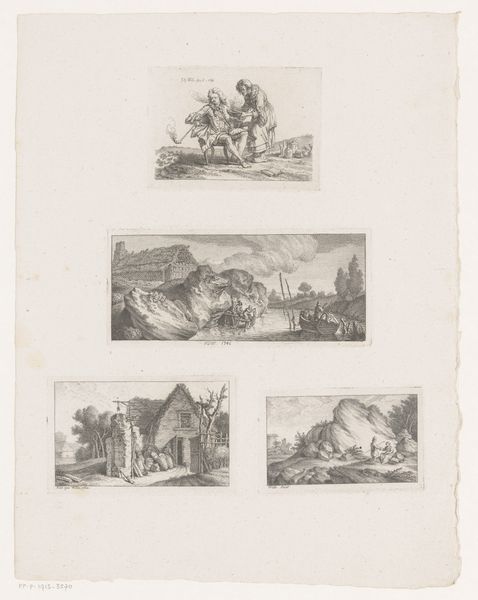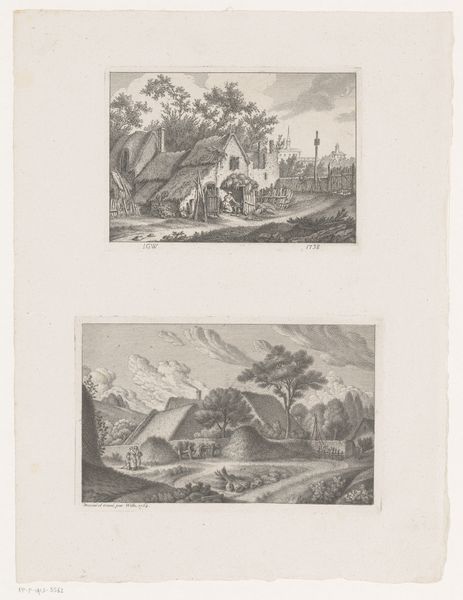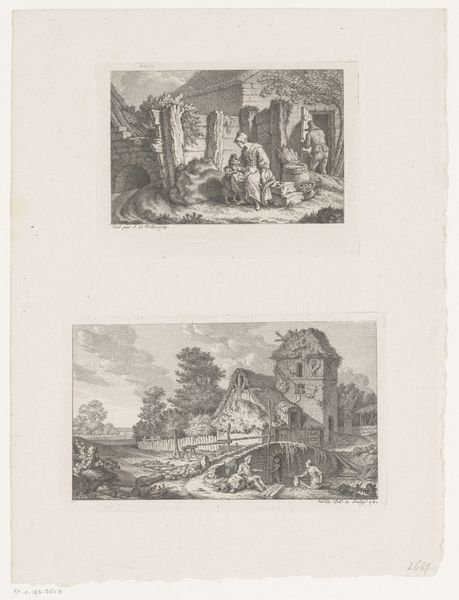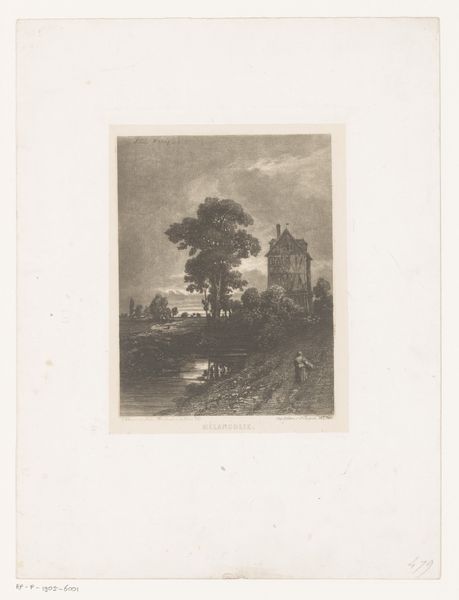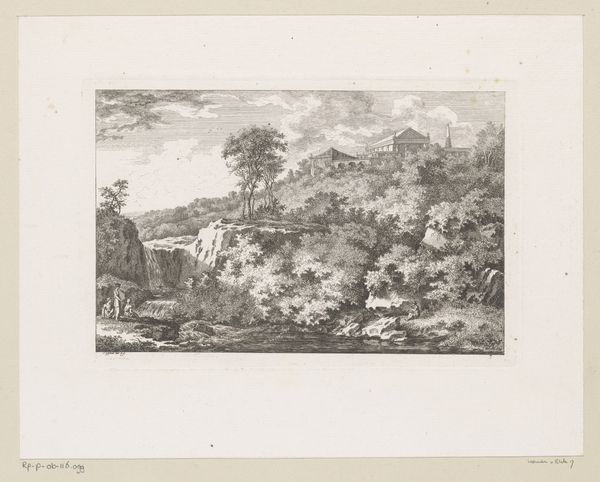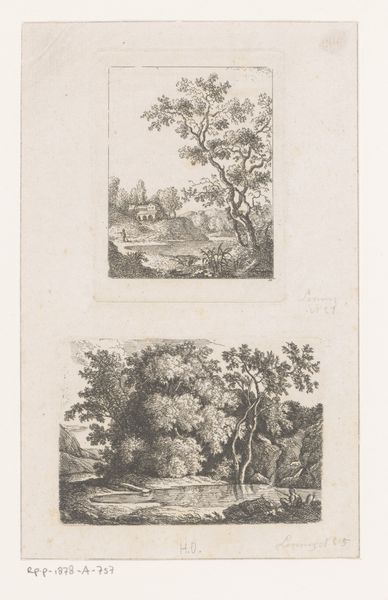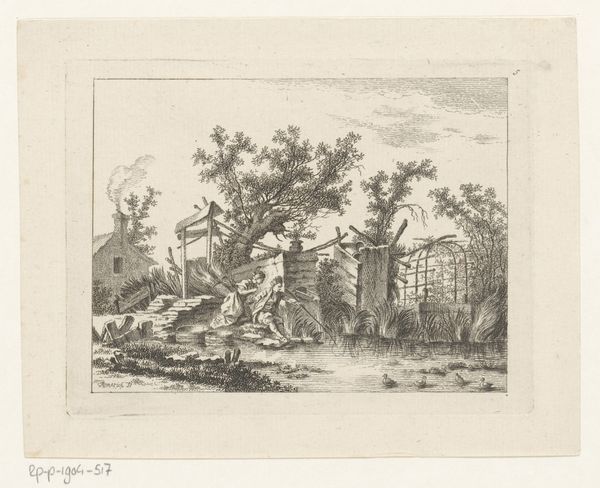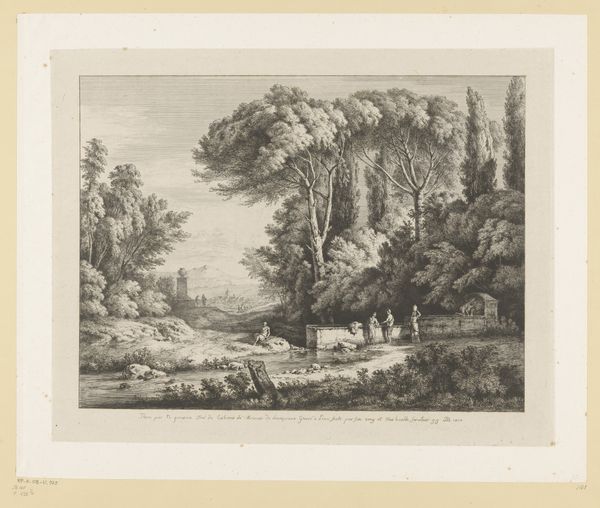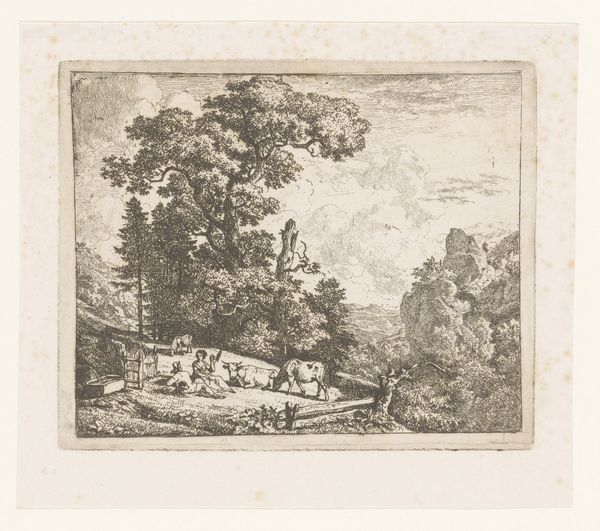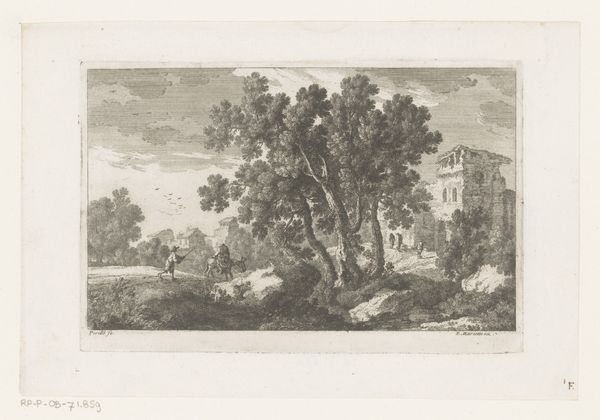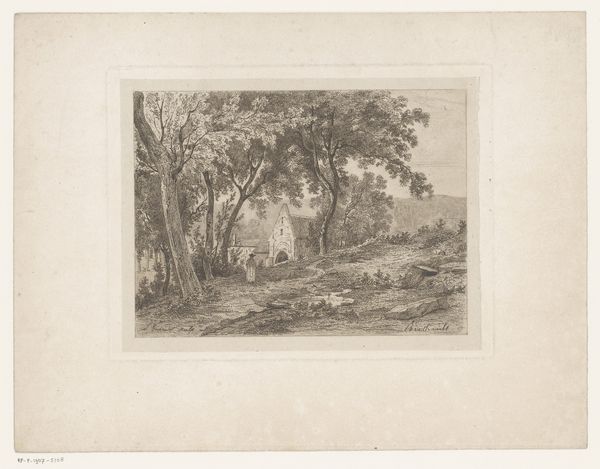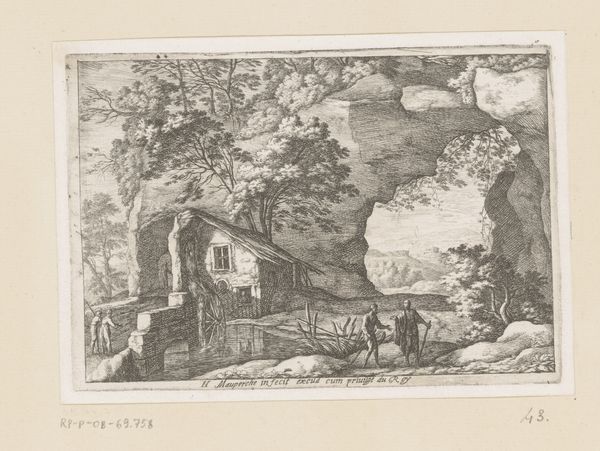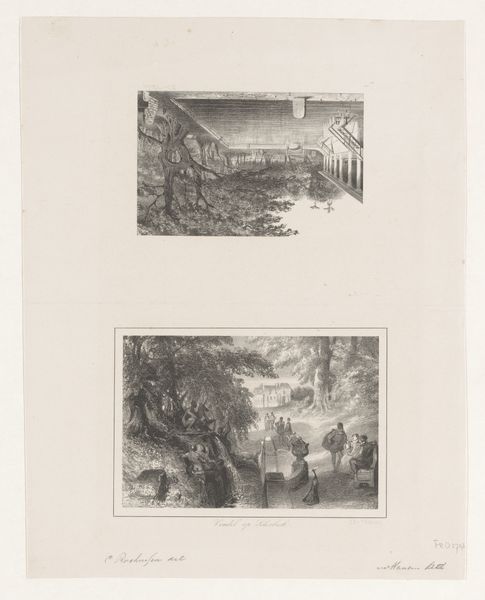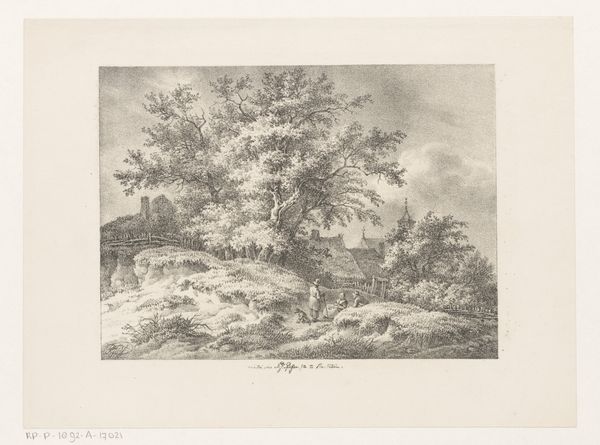
print, etching, engraving
#
baroque
# print
#
etching
#
landscape
#
genre-painting
#
engraving
Dimensions: height 97 mm, width 151 mm, height 113 mm, width 162 mm
Copyright: Rijks Museum: Open Domain
Johann Georg Wille created this artwork, “Lezende vrouw in een landschap en vrouw bij een waterput”, sometime between 1715 and 1808. It is currently held in the Rijksmuseum. Notice the recurring motif of women within landscapes. In the upper scene, a woman is reading. Below, a woman stands near a well. In the ancient world, the presence of women near wells or springs often signified life-giving and nurturing qualities, linking them to the earth’s fertility. Consider the symbol of the well itself. It is a portal to the depths, often associated with hidden knowledge and the subconscious. The act of drawing water can be seen as retrieving wisdom from the depths of the unconscious. This imagery echoes through centuries, from classical nymphs tending sacred springs to biblical scenes of women at wells, each iteration layering new meanings onto the old. The cyclical nature of water—evaporation, rain, and return to the source—mirrors the cyclical nature of symbols themselves: they resurface, evolve, and take on new meanings in different historical contexts.
Comments
No comments
Be the first to comment and join the conversation on the ultimate creative platform.
